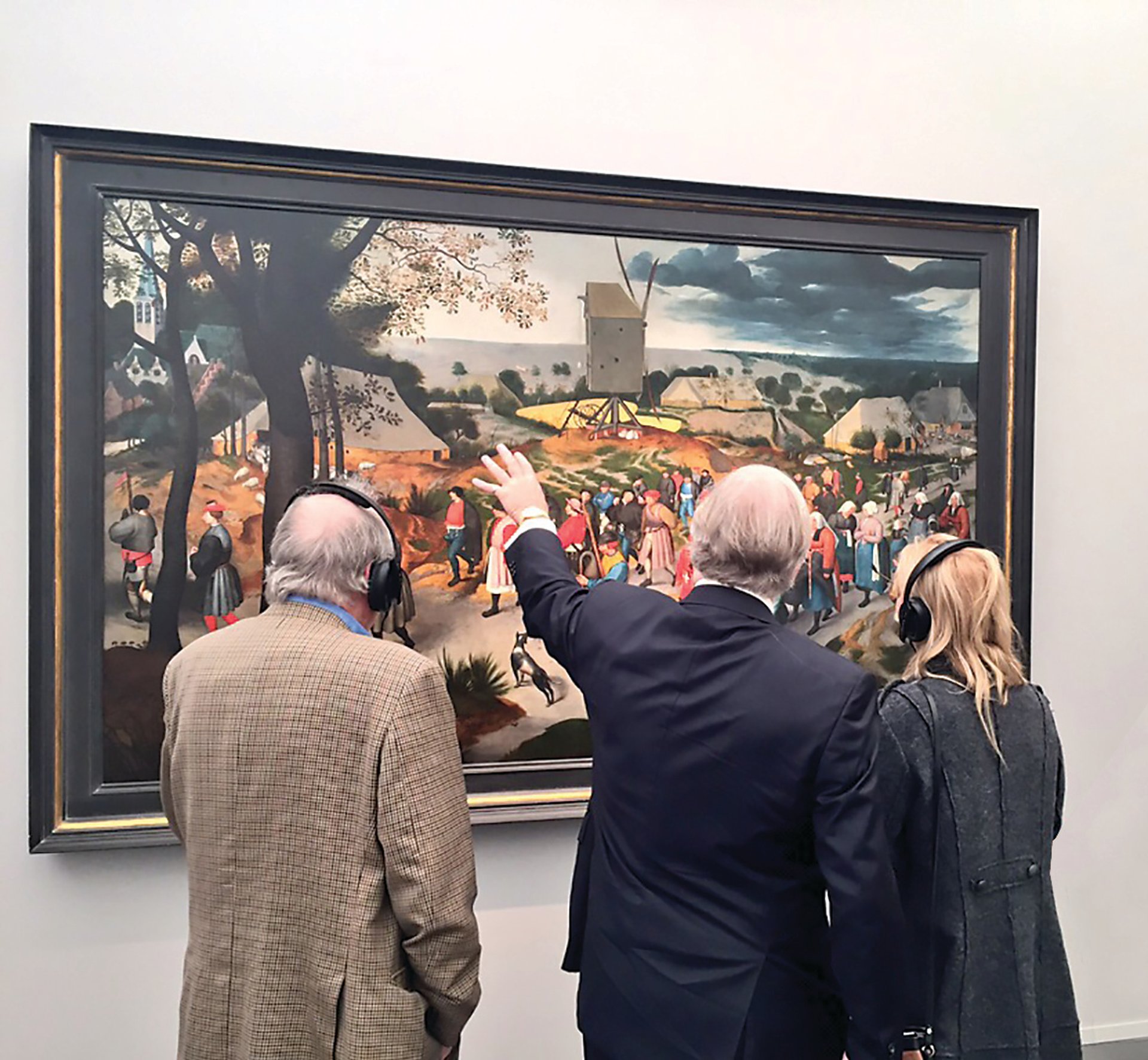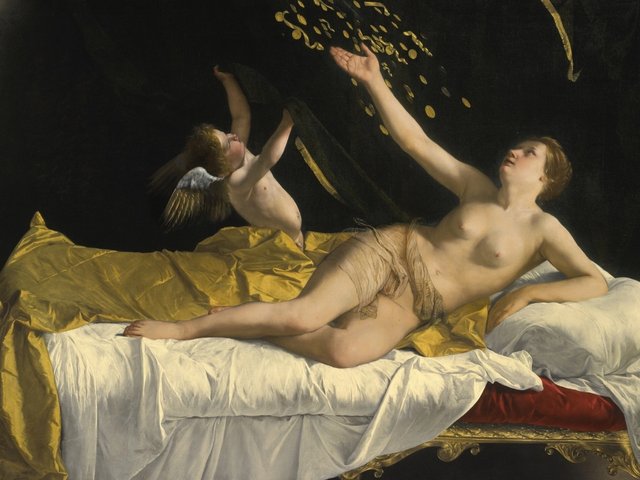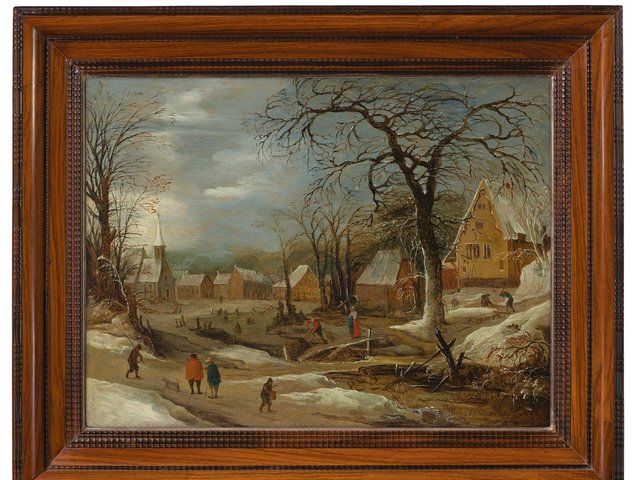Analysts are often quick to label Old Masters a dying branch of the art market, blaming generational changes in taste, a shrinking pool of dedicated collectors and the rarity of top-quality works for this perceived decline.
However, recent dealer activity in London’s traditional Old Master strongholds of Mayfair and St James’s seems to suggest that the narrative is one of adaptation and change, rather than decline.
Johnny Van Haeften, the stalwart Dutch Old Masters specialist, is closing his gallery on Duke Street in December, after almost 30 years of trading, to continue his work from his west London home with a particular focus on burgeoning Chinese appetite for the genre. “When the gallery closes I’ll be free to travel more and I’ll focus on brokerage, advisory and consultancy.” His departure will send ripples throughout London’s traditionally slow-paced and close-knit Old Masters community, but then so will the new and energetic younger dealers who are either setting up shop in the area or expanding existing operations.
Symbolising this changing of the guard, the young Italian dealer Fabrizio Moretti—who is just over 40 but has been trading since he was only 22—has bought Van Haeften’s space and the building next to it, formerly Derek Johns’s Old Master gallery, to form a large, single space.
The merger of the younger Spanish dealers Jorge Coll and Nicolás Cortés with Colnaghi, one of the world’s oldest surviving commercial art galleries, has resulted in a large new gallery on Bury Street; meanwhile, Lullo Pampoulides gallery opened in Mayfair’s Cork Street before the summer. It is run by Andreas Pampoulides, a former director of Coll & Cortés (prior to the Colnaghi merger), and the Old Masters specialist Andrea Lullo.
By modernising their presentation and rethinking their business approach, these dealers are adapting in ways that some of their elders have been reluctant to do. “There’s a lot to learn from the contemporary art world’s organisation and attitude,” says Jorge Coll. “The older generation of [Old Master] dealers had it easy because the trade was less transparent and export laws were less stringent. When you operate under those conditions for so long, you start to get comfortable.”
The good old days in which dealers could buy works at auction and sell them straight to clients—with a substantial mark-up—are long gone. Well-informed private collectors are now a dominant force in the auction room, and the market is more transparent than ever.And unlike in the contemporary world, new clients do not grow on trees.
“When we’re not participating in a major fair, we will aim to organise an event of our own each month, such as pop-up exhibitions in the United States,” Coll says. “We realise that collectors need memorable and educational experiences—museum trips, dinners and tours with curators. It’s expensive but we want clients to realise that we’re not just sitting and waiting for them in the gallery,” he says.
The slick décor and modern lighting at Lullo Pampoulides and Colnaghi’s new spaces aren’t just for show: they serve to create a familiar environment for the new generation of collectors. “We want the gallery to feel more like a beautiful contemporary apartment,” Andrea Lullo says. This is only a recent development for many Old Master dealers. “People imagine our galleries as still being decorated with austere, green velvet curtains,” says Van Haeften, known for his experimental approach to presentation.
Incomplete data

Van Haeften and Coll estimate that gallery sales account for roughly half of the market, but because analyses must rely on auction results, public records tell only part of the story. And in a category where the top lots are as rare as they are expensive, the presence, or absence, of even one major painting is enough to skew figures for an entire year.
The latest Tefaf market report points to a 33% drop in the value of Old Masters sold at auction in 2015, but figures do not take into account the “extraordinary year” that was 2014, according to Alexander Bell, the co-chairman of Old Master paintings at Sotheby’s. “We had works from the estates of the Duke of Northumberland and the Earl of Warwick [and a record-breaking Turner, Rome from Mount Aventine, which sold for £30.3m with fees]. Comparing 2015 to that year will always look bad. It’s frustrating that what comes to auction in a single year is treated as a barometer for the whole market—it’s not.”
Next year’s report might read differently simply because it will factor in Christie’s sale of Rubens’s Lot and his Daughters, which sold in July, at Christie’s first-ever Classic Week, for £40m with fees, the highest auction price ever paid for an Old Master painting.
As Colnaghi demonstrated at Tefaf in March by selling €12m worth of Old Masters on opening day, the category isn’t history just yet, despite the negativity that often surrounds it (both from commentators and from the more old-fashioned dealers themselves). “It’s like this for every generation,” says Lullo, of Lullo Pampoulides. “Even when my father started dealing in Old Masters, in the 1970s, the older dealers were already telling him the market was dead.”
Still, the fact remains that the collector base is not nearly as broad as that for modern and contemporary art. Says Van Haeften, “We have just over 3,000 collectors on our books who are mostly, but not exclusively, interested in Dutch and Flemish masters, and that’s taken 40 years to accumulate.” And, unfortunately for holders of second- and third-rate stock, they are only interested in top-quality works. “If you buy the right thing you can’t go wrong,” Coll says.



